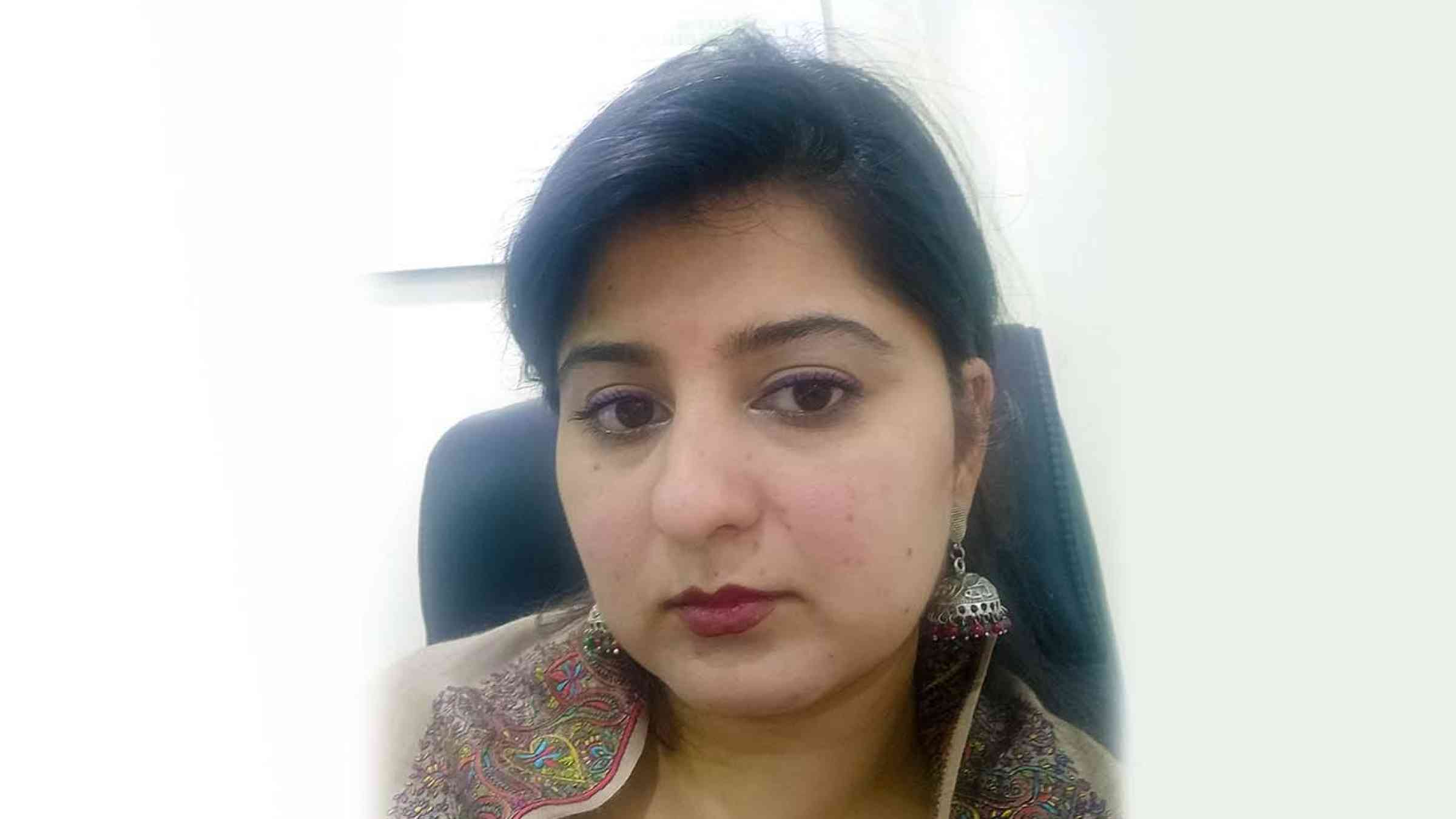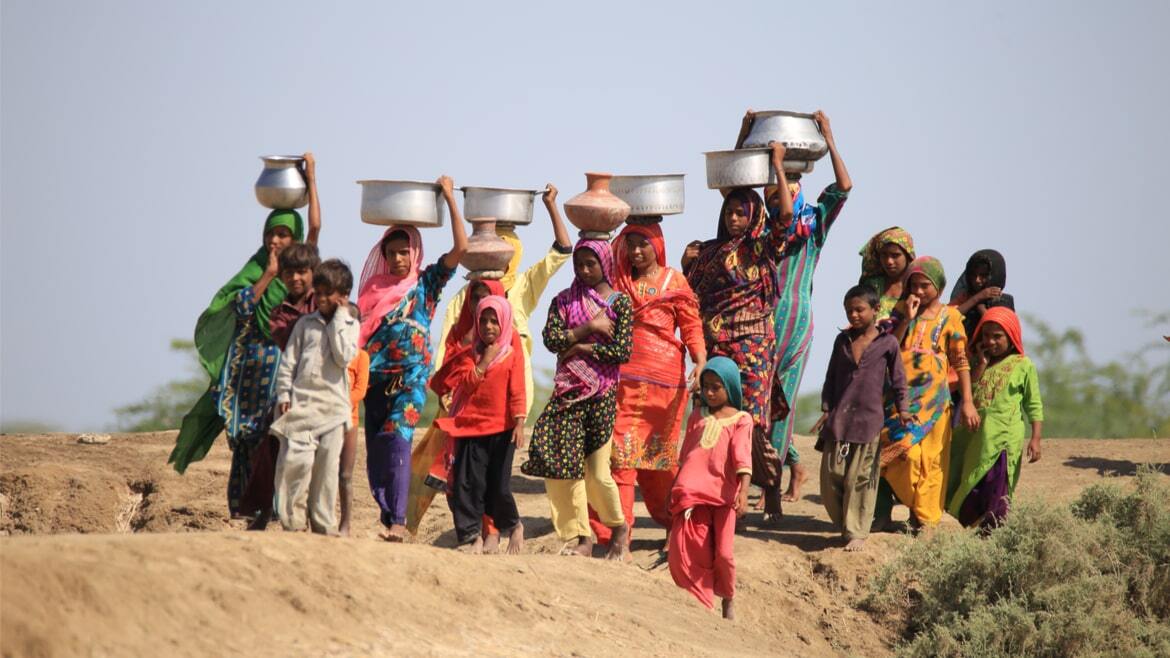Please help us improve PreventionWeb by taking this brief survey. Your input will allow us to better serve the needs of the DRR community.
Aisha Jamshed: Shifting to an anticipatory mindset – locally led early action in Pakistan

Community participation in anticipatory action – from planning to implementation – reduces risks to vulnerable people, while delivering long-term resilience.
Welthungerhilfe (WHH) is an independent German non-profit that has been working globally to fight hunger since 1962, using a collaborative, beneficiary-driven approach to humanitarian action, disaster risk reduction, and long-term development. WHH Pakistan coordinates the Start Network’s innovative Disaster Risk Financing (DRF) system, working with Start Network partners, local NGOs, and the National Disaster Management Authority.
WHH Pakistan Country Director Aisha Jamshed talked to PreventionWeb about what the DRF has achieved, the lessons learned, and the challenges encountered.
Community-led planning and implementation
The innovative multi-hazard anticipatory action programme provides a set of pre-funded contingency plans to respond to three hazards: heatwave, drought and flooding. Since the DRF’s implementation in 2020, it has been activated seven times.
“Local NGOs are able to draw on this new source of flexible and easily accessible funding to design and implement early actions to minimize future risks,” Aisha says.
Grassroots organisations and local communities lead scenario-based contingency planning, ensuring the plans are inclusive and appropriate to local environments.
“Through the DRF we were able to implement about 50% of our budget through local and national organisations which reduced the risk faced by vulnerable communities while increasing the capacities of these local organizations,” she says.
“We observed that those anticipatory actions which were designed with their inclusion of communities are more sustainable and are backed by communities even after the project ends.”
Funding ahead of hazards
“The DRF ensures adequate funding is available through a wide range of financial instruments well before natural hazards threaten communities,” Aisha explains.
“The DRF concept uses customized scientific hazard prediction models which allow real-time quantification of disaster risks.”
These models draw on data from the National Oceanic and Atmospheric Administration (NOAA) National Oceanic and Atmospheric Administration, the Global Flood Awareness System (GloFAS), and NDVI (Normalized Difference Vegetation Index) data acquired from satellite images and historical crop data. They incorporate pre-defined triggers, indicating imminent hazards, that automatically set off implementation.
“The DRF then releases funds based on predetermined scientific triggers, utilizing insurance tools and principles.”
Heatwave in Karachi
On 20 May 2020 a forecasted heatwave in Karachi – defined as two consecutive days with maximum daily temperatures above 42°C and minimum temperatures above 30°C – triggered the DRF. Within 48 hours – and seven days before the heatwave began – funds were released to a designated NGO to begin implementing the plan targeting 4.5 million inhabitants of six Karachi districts.
“Activities included awareness raising about preventing heatstroke through print media, SMS, radio, and social media,” Aisha says. “These activities continued throughout the high-risk period and the remainder of the heatwave season.”
Local NGO partners distributed heatwave kits – each comprising a water bottle, sun hat, rehydration solution, umbrella and hand towels – to informal sector and daily-wage workers. They also erected shaded cooling shelters with chairs, fans and cold water, as well as information about heatstroke symptoms and prevention.
After the heatwave response, a knowledge, attitudes and practices (KAP) study gathered feedback from local communities, including the most vulnerable, to inform the design of future responses.
Drought in Sindh and Punjab
In April 2021 the forecast models predicted drought conditions in Sindh and Punjab provinces beginning in July and August. This triggered the implementation of a plan covering 48,000 households in high-risk areas, beginning in June until the end of the calendar year.
The response promotes agricultural resilience: capacity building on drought-resilient practices and techniques; distribution of drought-resistant seeds; provision of livestock feed; support of livestock immunisation campaigns; and awareness raising on destocking of livestock. The plan also offers some skills training and hygiene promotion activities.

Challenges
The results of the DRF are promising.
“The most astonishing result is that, with only £570,000 [US$ 765,000], we were able to reach 7,541,000 people in a timely manner to reduce the risks – at just a fraction of the cost of an emergency response,” Aisha says.
However, she believes there is still much to be done to shift the humanitarian community away from a reactive mindset.
“The whole system is tuned to emergency responses rather than reducing risks and anticipatory responses,” she notes. “Anticipatory response is a new concept so there is a lack of capacity, especially among local partners. The hazard prediction warnings and hazard triggers need to be credible and reliable to build confidence among humanitarian responders and communities.”
There is also a need for greater coordination with international donors – to facilitate timely transfers of funding – and with local authorities – to expedite permissions to implement responses with short lead times.
“Covid -19 did pose challenges in outreach to beneficiaries and implementing activities which require interaction,” Aisha says. “However, it also presented an opportunity as the awareness-raising and hazard-prevention messages could be updated to contain Covid-19 prevention measures.”
Aisha Jamshed is the Country Director for Welthungerhilfe Pakistan, which coordinates the Start Network's Disaster Risk Financing (DRF) programme in the country. She has previously been engaged in piloting several innovative projects in Pakistan to enable swift needs-based responses for marginalized and vulnerable communities; and she believes that grassroots initiatives are essential for recognizing and responding to the realities of the local people.
Editors' recommendations
- Knowledge, attitude, and practice around heatwaves in Karachi following a forecast-based heatwave messaging project
- Start Network and Pakistan government collaborate on new way to finance drought response
- Disaster risk reduction in Pakistan
- Seven reasons to act early, before a hazard turns into a disaster
- Markus Enenkel: If disasters can be predicted, acting early is the right thing to do
Explore further
Please note: Content is displayed as last posted by a PreventionWeb community member or editor. The views expressed therein are not necessarily those of UNDRR, PreventionWeb, or its sponsors. See our terms of use
Is this page useful?
Yes No Report an issue on this pageThank you. If you have 2 minutes, we would benefit from additional feedback (link opens in a new window).